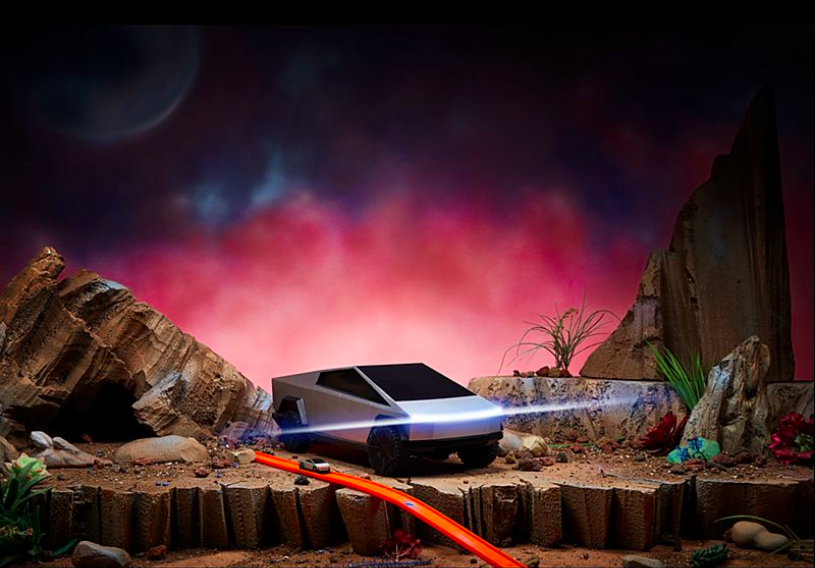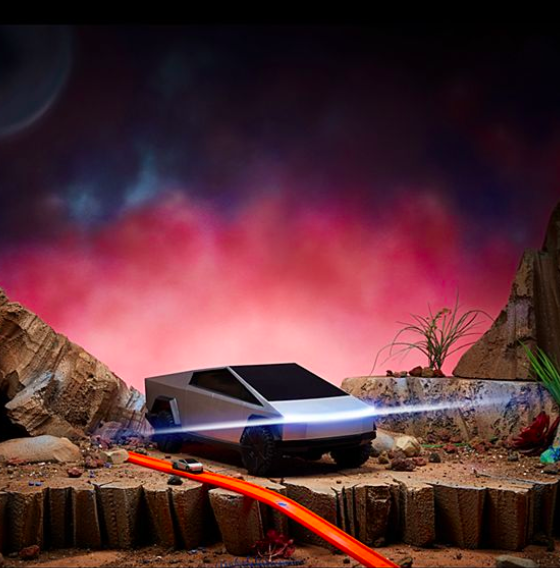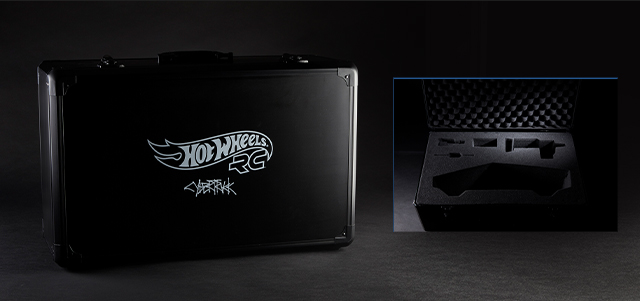

News
Tesla Cybertruck Hot Wheels models enter ‘production hell’ with delivery delays
While construction on Tesla’s Cybertruck factory, Giga Texas, seems to be moving on schedule, Hot Wheels appears to be experiencing some form of “production hell” of its own with the 1:10 and 1:64 scale versions of the all-electric pickup truck. Recent emails to preorder holders of the Tesla Cybertruck Hot Wheels edition revealed that their orders would be delayed to May 2021
Both the 1:10 and 1:64 Hot Wheels Cybertruck models are sold out and were initially listed with an expected ship date of December 2020. The five-month delay may remind early Model 3 owners of Tesla’s production hell in 2018. At the time, Tesla Model 3 reservation holders also had to exercise some patience as the company struggled to ramp the mass production of its all-electric sedan.
Redditor u/melancholicricebowl, who is also a Model 3 owner, shared an email about his limited edition 1:10 scale Hot Wheels R/C Cybertruck reservation. It stated that his order would be delayed and asked him to re-confirm the order. A similar email for the same Reddit user’s 1:64 scale Hot Wheels R/C Cybertruck order was sent later.
Official confirmation that Hot Wheels 1:10 Cybertruck has been delayed to May 2021 from r/teslamotors
The email concerning the Redditor’s 1:10 Hot Wheels Cybertruck stated there were production issues with the hobby grade-radio-controlled Cybertruck due to the COVID-19 pandemic. Mattel Creations also decided to change the product’s battery specifications.
“Battery spec update: Due to production challenges related to COVID-19, we wanted to share a change in the Cybertruck’s battery specifications. The new battery is a 9.6v @ 3Ah LiFePO4 model, with one hour of charge time and 30 minutes of run time. Don’t worry, this change shouldn’t affect its overall performance – it just means that it can reach up to 250mph scale speed!” the email stated.
The battery update may be a bold move for Mattel Creations, but one that might be appreciated by Tesla fans. Hot Wheels’ mini Cybertruck iteration will be equipped with a Lithium Iron Phosphate battery, similar to the China-Made Model 3 Standard Range Plus produced in Shanghai.

It seems like Mattel Creations will be giving Hot Wheels Cybertruck preorder holders an authentic Tesla experience, matching the EV company’s constant desire to improve the performance of their vehicles.
The email about the 1:10 scale Hot Wheels Cybertruck also included a link to its carrying case. The Reddit user who shared the information commented on the delay, stating: “A bit disappointing that we didn’t get an update until now.”
To re-confirm a Hot Wheels Cybertruck order with Mattel, Redditor u/duckduckohno advises reservation holders to include their order number, order details, ship date, name, addressed, and confirmation number in their response.

News
Tesla FSD fleet is nearing 7 billion total miles, including 2.5 billion city miles
As can be seen on Tesla’s official FSD webpage, vehicles equipped with the system have now navigated over 6.99 billion miles.

Tesla’s Full Self-Driving (Supervised) fleet is closing in on almost 7 billion total miles driven, as per data posted by the company on its official FSD webpage.
These figures hint at the massive scale of data fueling Tesla’s rapid FSD improvements, which have been quite notable as of late.
FSD mileage milestones
As can be seen on Tesla’s official FSD webpage, vehicles equipped with the system have now navigated over 6.99 billion miles. Tesla owner and avid FSD tester Whole Mars Catalog also shared a screenshot indicating that from the nearly 7 billion miles traveled by the FSD fleet, more than 2.5 billion miles were driven inside cities.
City miles are particularly valuable for complex urban scenarios like unprotected turns, pedestrian interactions, and traffic lights. This is also the difference-maker for FSD, as only complex solutions, such as Waymo’s self-driving taxis, operate similarly on inner-city streets. And even then, incidents such as the San Francisco blackouts have proven challenging for sensor-rich vehicles like Waymos.
Tesla’s data edge
Tesla has a number of advantages in the autonomous vehicle sector, one of which is the size of its fleet and the number of vehicles training FSD on real-world roads. Tesla’s nearly 7 billion FSD miles then allow the company to roll out updates that make its vehicles behave like they are being driven by experienced drivers, even if they are operating on their own.
So notable are Tesla’s improvements to FSD that NVIDIA Director of Robotics Jim Fan, after experiencing FSD v14, noted that the system is the first AI that passes what he described as a “Physical Turing Test.”
“Despite knowing exactly how robot learning works, I still find it magical watching the steering wheel turn by itself. First it feels surreal, next it becomes routine. Then, like the smartphone, taking it away actively hurts. This is how humanity gets rewired and glued to god-like technologies,” Fan wrote in a post on X.
News
Tesla starts showing how FSD will change lives in Europe
Local officials tested the system on narrow country roads and were impressed by FSD’s smooth, human-like driving, with some calling the service a game-changer for everyday life in areas that are far from urban centers.

Tesla has launched Europe’s first public shuttle service using Full Self-Driving (Supervised) in the rural Eifelkreis Bitburg-Prüm region of Germany, demonstrating how the technology can restore independence and mobility for people who struggle with limited transport options.
Local officials tested the system on narrow country roads and were impressed by FSD’s smooth, human-like driving, with some calling the service a game-changer for everyday life in areas that are far from urban centers.
Officials see real impact on rural residents
Arzfeld Mayor Johannes Kuhl and District Administrator Andreas Kruppert personally tested the Tesla shuttle service. This allowed them to see just how well FSD navigated winding lanes and rural roads confidently. Kruppert said, “Autonomous driving sounds like science fiction to many, but we simply see here that it works totally well in rural regions too.” Kuhl, for his part, also noted that FSD “feels like a very experienced driver.”
The pilot complements the area’s “Citizen Bus” program, which provides on-demand rides for elderly residents who can no longer drive themselves. Tesla Europe shared a video of a demonstration of the service, highlighting how FSD gives people their freedom back, even in places where public transport is not as prevalent.
What the Ministry for Economic Affairs and Transport says
Rhineland-Palatinate’s Minister Daniela Schmitt supported the project, praising the collaboration that made this “first of its kind in Europe” possible. As per the ministry, the rural rollout for the service shows FSD’s potential beyond major cities, and it delivers tangible benefits like grocery runs, doctor visits, and social connections for isolated residents.
“Reliable and flexible mobility is especially vital in rural areas. With the launch of a shuttle service using self-driving vehicles (FSD supervised) by Tesla in the Eifelkreis Bitburg-Prüm, an innovative pilot project is now getting underway that complements local community bus services. It is the first project of its kind in Europe.
“The result is a real gain for rural mobility: greater accessibility, more flexibility and tangible benefits for everyday life. A strong signal for innovation, cooperation and future-oriented mobility beyond urban centers,” the ministry wrote in a LinkedIn post.
News
Tesla China quietly posts Robotaxi-related job listing
Tesla China is currently seeking a Low Voltage Electrical Engineer to work on circuit board design for the company’s autonomous vehicles.

Tesla has posted a new job listing in Shanghai explicitly tied to its Robotaxi program, fueling speculation that the company is preparing to launch its dedicated autonomous ride-hailing service in China.
As noted in the listing, Tesla China is currently seeking a Low Voltage Electrical Engineer to work on circuit board design for the company’s autonomous vehicles.
Robotaxi-specific role
The listing, which was shared on social media platform X by industry watcher @tslaming, suggested that Tesla China is looking to fill the role urgently. The job listing itself specifically mentions that the person hired for the role will be working on the Low Voltage Hardware team, which would design the circuit boards that would serve as the nervous system of the Robotaxi.
Key tasks for the role, as indicated in the job listing, include collaboration with PCB layout, firmware, mechanical, program management, and validation teams, among other responsibilities. The role is based in Shanghai.
China Robotaxi launch
China represents a massive potential market for robotaxis, with its dense urban centers and supportive policies in select cities. Tesla has limited permission to roll out FSD in the country, though despite this, its vehicles have been hailed as among the best in the market when it comes to autonomous features. So far, at least, it appears that China supports Tesla’s FSD and Robotaxi rollout.
This was hinted at in November, when Tesla brought the Cybercab to the 8th China International Import Expo (CIIE) in Shanghai, marking the first time that the autonomous two-seater was brought to the Asia-Pacific region. The vehicle, despite not having a release date in China, received a significant amount of interest among the event’s attendees.








